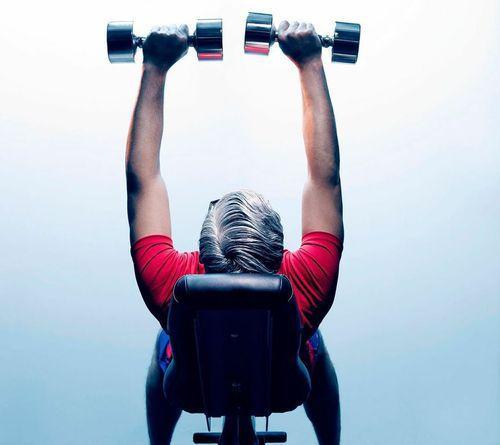
Photo: Travis Rathbone/Trunk
When Patricia Wrixon realized that she could barely carry her groceries up to her second-floor walkup in Boston’s North End, the 72-year-old knew something had to give. For a minute, she considered moving to an apartment with an elevator. Then she tried something a little less radical — exercise.
Wrixon has a busy career as owner of The Salon at 10 Newbury, but working out wasn’t a priority. She thought she’d start slow with yoga, but the class was on the fourth floor, and it took 60 steps to get there — a workout in itself. So she joined Exhale, a local gym that offers yoga, stretching, and Core Fusion classes, a mix of barre, light weights, and mat work. She started by taking one-on-one yoga and stretching classes to ease herself into a routine. “I was afraid if I dove into a regular class, I might get hurt,” Wrixon says.
According to Los Angeles trainer Kendell Hogan, regional director forCrunch, starting out slow is the smart way to go when you’re taking up exercise after your 65th birthday. Hogan advises against high intensity, cardiovascular workouts or heavy weight-bearing exercise, which can elevate your heart rate too much or increase your risk of injury. According to the trainer, the most important thing is to just get people moving. “As you age you start to lose your muscle mass, so it’s important to stay active to stay strong,” Hogan tells Yahoo Beauty. “It’s not just about working out, it’s about being able to bend down and pick up groceries or pick up your grandchildren.”
After just six months of exercising three days a week, Wrixon is noticing some big results. “My balance is better; I can get dressed without leaning on something,” she says. “I’ve also noticed an increase in my stamina, which helps when you work 60 hours a week like I do, and I feel more active when taking care of my grandchildren.” And carrying groceries up the stairs? “No problem,” laughs Wrixon.
If you’re over age 65 and thinking of exercising, the first stop should be your doctor’s office to get the green light. Then comes the fun stuff. Here is Hogan’s advice on the best workouts for seniors, from swimming to squats.
Dive in
"Swimming is a total body workout, so it is one of the best things you can do," says Hogan. It is also low impact, making it easier on joints and minimizing the risk of injury. Hogan recommends signing up for an aqua aerobics class to build muscle tone and get your heart rate slightly elevated. On your own, Hogan recommends standing in the shallow end of the pool and doing knee lifts. The water provides resistance to help tone leg muscles.
Dance
Dancing is a great choice for people who don’t like, or are bored by, traditional exercise. “You’re getting your heart rate up without feeling like you are exercising,” Hogan says. Another benefit is the social aspect of dancing that involves exercising with a partner or a group. Try a dance night at a local senior center, or find a class at a local gym that incorporates dance as part of the workout. At Crunch, Hogan teaches Crunch Boom, a 30-minute dance workout with music from a variety of decades.
Say Om
Yoga helps with flexibility, strength, and focus, all of which become increasingly important as we age. “Make sure you choose the right class for your ability,” Hogan says. For new yogis, Hogan advises against hot yoga, which is done in a room with temperatures up to 105 degrees Fahrenheit, or the complicated poses in a vigorous Ashtanga class. Instead, try Hatha or gentle yoga, both of which are better entry-level workouts that focus on stretching and breathing.
Try a barre class
Hogan believes there are a lot of perks to trying a barre class, including working on your core. However, he thinks this is best for seniors who have good balance and flexibility, as there are deep squats and intense stretches involved. A beginner class would be the best place to start.
Keep your balance
"Many people have balance issues when they get older, so I recommend balance training exercises," says Hogan. His advice is to stand with a chair or stable surface within reach, lift one foot up, and hold the position to a count of 10. Repeat with the other foot. Try the exercise again on your tiptoes. Do as many reps as you are comfortable with. “It doesn’t require much to really see some improvements in your balance,” Hogan says. “Even three minutes of this exercise every day will help.”
Squat for strength
Everyday activities like bending down, picking up, or carrying objects are easier when you have strong legs. To get your legs and backside in optimum shape and increase muscle density, Hogan suggests squatting. Stand above a steady, solid chair, and hold on to a cane or stick in front of you for stability. Then bend your legs in a sitting motion, letting your bottom touch the seat lightly, and pop back up (do not sit down). Do 8-10 reps a day.
Increase arm strength
Regular pushups are great for upper-body strength, but floor exercises can be tough to do if you’re not in peak shape. Hogan’s solution is to stand at arm’s length away from a wall, placing both palms flat against the wall. Then lean into the wall and gently push out. Repeat this as many times as you can for increased core and arm power.
Facebook Comment Here
No comments:
Post a Comment
Finish Reading ? Make Your Comment Now..!